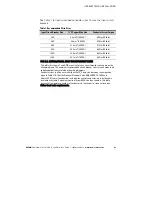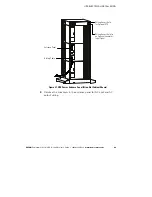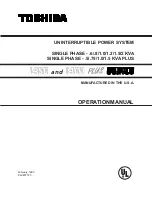
ISOLATED OUTPUT WIRING DIAGRAMS
EATON
Powerware
®
9170
+
UPS (3–18 kVA) User’s Guide
S
164201393 Rev C
www.powerware.com
54
100, 110,
115, or 120
X2
50 or 60 Hz
100/200, 110/220, 115/230, or 120/240V Out
with Isolated Output Option
Menu 4 2 4 set to 200, 220, 230, or 240, as required.
X1
X3
X
X
N-G Bond
L2
N
X
L1
200, 220, 230, or 240
100, 110,
115, or 120
X0
Figure 36. Isolated Outputs – Single-Phase Voltages
X2
50 or 60 Hz
120/208 or 127/220V Out
with Isolated Output Option
Menu 4 2 4 set to 208 or 220, as required.
X1
X3
X
X
N-G Bond
L2
N
X
L1
208 or 220
120 or 127
X0
88 or 93
Figure 37. Isolated Outputs – Derived Three-Phase Voltages
Neutral-to-Ground Bonding for Isolated Output
As required under safety regulations issued by various regulatory
agencies, the UPS cabinet must have a ground-bond connection for the
neutral terminal of an isolated-output system. In such a system, the
customer must make the neutral-to-ground (also referred to as N-G or
neutral-to-earth) connection after selecting the desired output
configuration.
In isolated-output systems,
connect the neutral-to-ground (neutral-to-earth)
wire to the proper terminal before making any other connections to the UPS
. A
green and yellow neutral-to-ground bonding wire is supplied, with one
end connected to the ground (earth) UPS terminal as shown in
Figure 38. The other end of the wire (as shown by * in Figure 38) must
be attached to the proper output neutral terminal, as specified in
Figure 36 and Figure 37.
















































